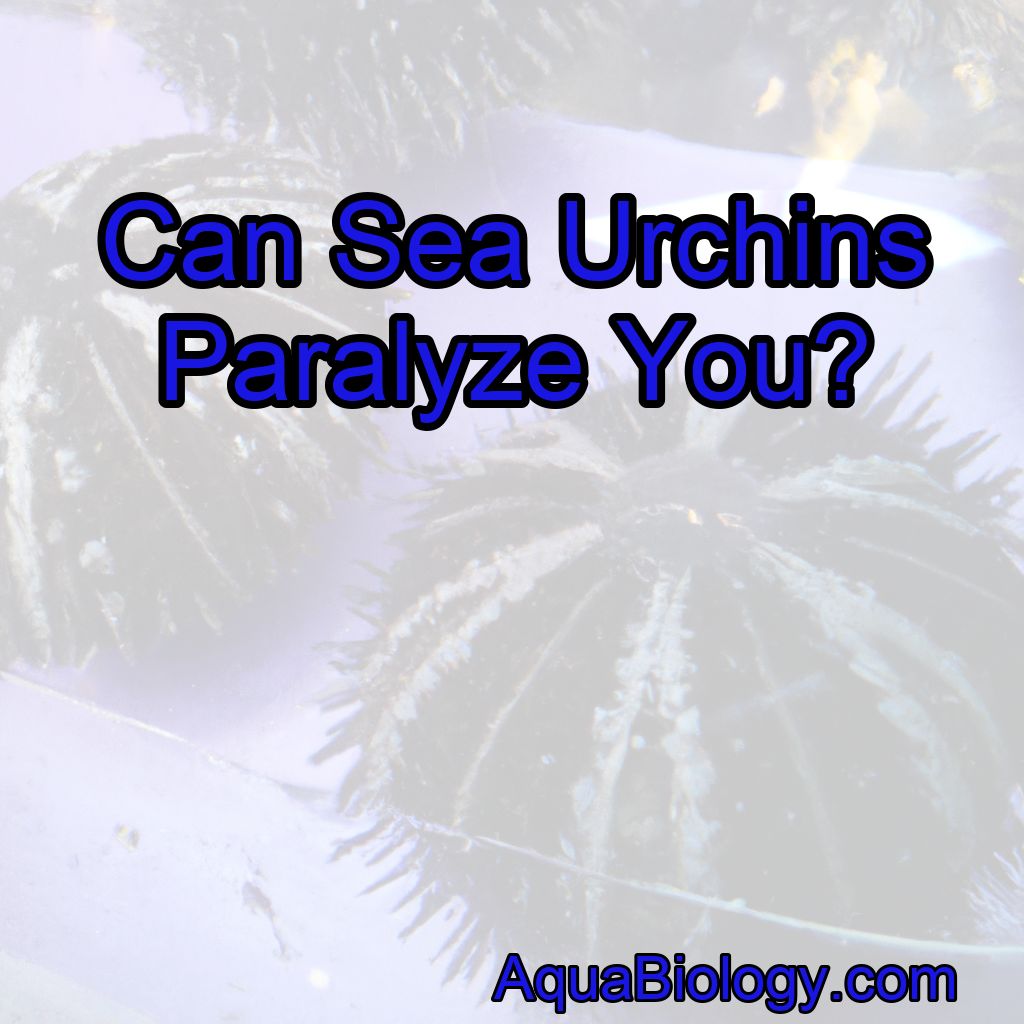As a marine biologist, I have always been fascinated by the wonders of the ocean.
One creature that has always captured my attention is the sea urchin.
These spiny creatures may seem harmless at first glance, but there is a common misconception that they have the ability to paralyze humans.
However, sea urchins cannot paralyze you!
Today, I want to dive deep into this topic and shed some light on whether sea urchins can truly paralyze you.
The Spiky World of Sea Urchins
Sea urchins are members of the echinoderm family, which also includes starfish and sea cucumbers. They are found in oceans all around the world and come in a variety of shapes, sizes, and colors.

These fascinating creatures have a spherical body covered in sharp spines, which serve as their primary defense mechanism. The spines are made of calcium carbonate and can deliver a painful sting when touched.
Understanding the Sting
While sea urchins do possess venom, it is important to note that the majority of species are not dangerous to humans. Instead of paralyzing their prey, sea urchins primarily use their venom as a defensive mechanism against potential predators.
The venom is contained within tiny sacs located at the base of their spines. When a sea urchin feels threatened, it can release the venom into the skin of its predator or unfortunate human victim.
The Effects of a Sea Urchin Sting
If you happen to come into contact with a sea urchin’s spines, you may experience a sharp and intense pain. The sting can be likened to a bee or wasp sting.
However, it is important to note that the severity of the sting can vary depending on the species of sea urchin and the individual’s sensitivity to the venom. Some people may experience mild discomfort and redness, while others may develop more severe symptoms such as swelling, numbness, or even an allergic reaction.
First Aid for a Sea Urchin Sting

If you find yourself on the receiving end of a sea urchin sting, there are steps you can take to alleviate the pain and prevent further complications. Firstly, it is crucial to remove any spines that may be embedded in your skin.
This can be done by using tweezers or a sterilized needle to gently lift the spines out. It is important to avoid squeezing or breaking the spines, as this can cause them to fragment and make removal more difficult.
After removing the spines, you should clean the affected area with soap and water to reduce the risk of infection.
Applying a topical antiseptic and covering the wound with a clean bandage can also help prevent any further complications.
If you experience severe symptoms or an allergic reaction, it is vital to seek medical attention immediately.
Debunking the Paralyzing Myth
Now that we have explored the nature of sea urchin stings, it’s time to address the burning question: can sea urchins paralyze you?
The answer is a resounding NO.
Sea urchin venom is not potent enough to paralyze a human.
While the sting can be painful and may cause localized symptoms, it does not have the ability to immobilize or incapacitate an individual.
To further debunk this myth, here are five facts to remember about sea urchins and their stings:
1. Sea urchin venom is primarily used for defense against predators, not for paralyzing prey or humans.
2. The severity of a sea urchin sting can vary depending on the species and an individual’s sensitivity to the venom.
3. Promptly removing any embedded spines and cleaning the wound can help prevent further complications.
4. Sea urchin stings are comparable to bee or wasp stings in terms of pain and discomfort.
5. Seeking medical attention is necessary if severe symptoms or an allergic reaction occurs.
In conclusion, sea urchins may be prickly creatures, but they do not possess the ability to paralyze humans. While their stings can be painful and cause localized symptoms, the venom is not potent enough to immobilize or cause paralysis.
So, the next time you encounter a sea urchin, you can appreciate their beauty and intricate design without fear of being paralyzed.
FAQs
Are sea urchin spines poisonous?
Yes, sea urchin spines are typically venomous and can cause pain, swelling, and other symptoms if they penetrate the skin.
What happens if you get poked by a sea urchin?
Getting poked by a sea urchin can cause pain, swelling, and in some cases, infection.
The spines may also break off and remain in the skin, which can cause further irritation and inflammation.
It is important to seek medical attention if symptoms persist or if the spines cannot be removed safely.
What are the side effects of sea urchins?
Sea urchins can cause puncture wounds and skin irritation if stepped on or handled improperly.
Ingesting raw or undercooked sea urchin can also cause gastrointestinal discomfort and allergic reactions in some individuals.
What happens if a sea urchin sting is left untreated?
If a sea urchin sting is left untreated, it can cause pain, swelling, redness, and inflammation at the site of the sting.
In some cases, the spines can break off and become embedded in the skin, leading to infection.
It is important to remove any visible spines and seek medical attention if symptoms persist or worsen.
How dangerous are sea urchin spines?
Sea urchin spines can be dangerous if they puncture the skin, as they can cause pain, swelling, infection, and in rare cases, allergic reactions or systemic toxicity.
It is important to seek medical attention if a sea urchin sting occurs.
Can sea urchins cause nerve damage?
Yes, sea urchins can cause nerve damage if their spines penetrate the skin and come into contact with nerves.
The venom contained in some species of sea urchins can also cause neurological symptoms such as numbness, tingling, and muscle weakness.




